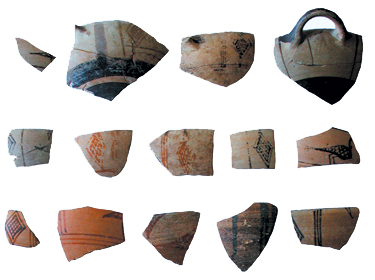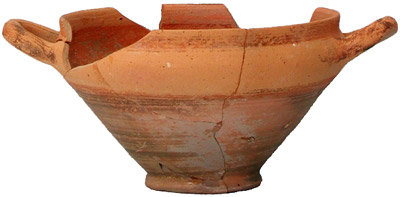As the regional and local pottery, the greek pottery found in 7th century B.C. levels in Argilos can be separated into two groups : vases originating from Eastern Greek cities and others produced in the Cycladic islands. In both cases, the shapes are mainly drinking vessels: cups, bowls, and skyphoi. East Greek production consists of « bird bowls », a type of cup characteristic of this period, on which the painters represented waterbirds placed between hatched lozenges and groups of vertical lines. These bowls were made in many East Greek cities, mainly in Northern Ionia, and widely distributed in the Mediterranean.

East Greek “bird bowls”, 7th century B.C.
The cycladic vases consist of skyphoi, mugs, and lekanai. The skyphoi show a particular shape: they have a deep body with a peculiar concave/convex curve. On 7th century examples, the lip is small and flares out, whereas it is strait and, therefore, higher with those belonging to the 6th century B.C. Scholars thought that this type of skyphos was made on the island of Siphnos as many specimens were found amongst the offerings of a temple brought to light there. However, given the fact that Greek colonists used to import their everyday pottery from their mother-city, the great quantity of such skyphoi found at Argilos now suggests another area, the island of Andros, as production centre.

Cycladic skyphos, beginning of 6th century B.C.


